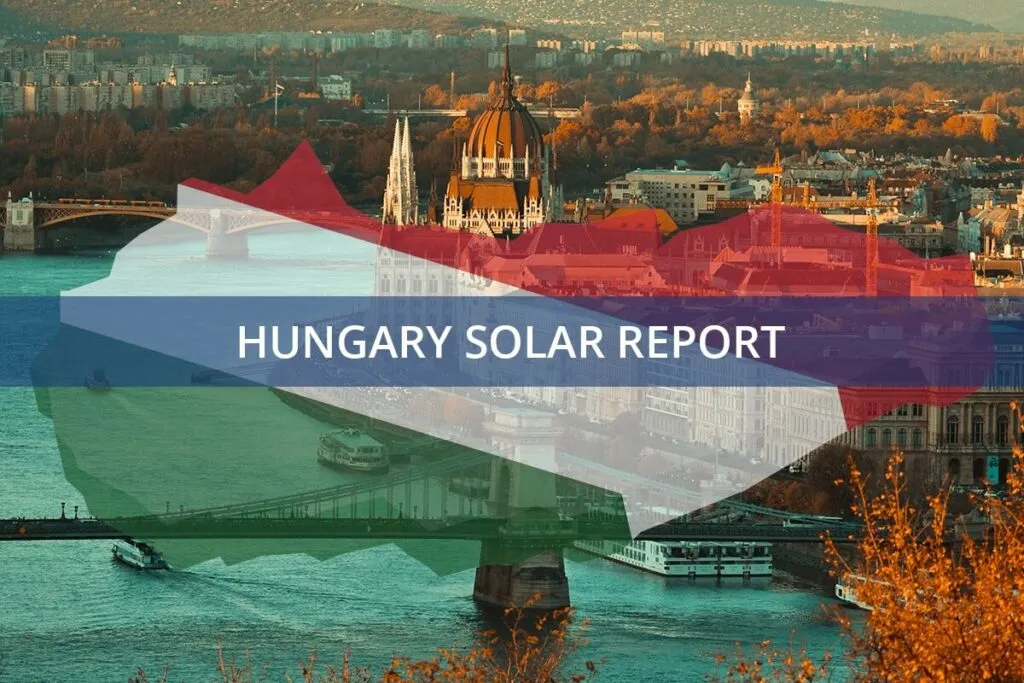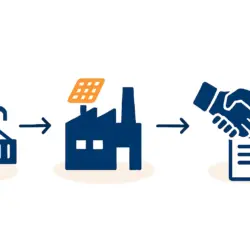In Hungary, the growth of solar energy capacity has been significantly supported by public enthusiasm, positioning the nation as a surprising leader in the European green transition. In recent years, there has been a surge in solar installations, driven by a combination of government incentives, tax breaks, and strong citizen support. Between 2020 and 2023, solar capacity skyrocketed from 1.7 GW to over 5 GW, according to the Hungarian Energy and Public Utility Regulatory Authority.
Solar Energy Capacity Hits 5 GW in Hungary: Renewable Energy Update
The enthusiasm for solar energy in Hungary is evident in the remarkable rise of solar installations, particularly on rooftops. In 2023, the country achieved a significant milestone by reaching 5 gigawatts (GW) of solar capacity, a nearly threefold increase from 1.7 GW in 2020. This rapid expansion has made Hungary a global frontrunner, with recent reports showing solar power accounted for close to 30% of its electricity generation in the first half of 2025.
The Hungarian Energy and Public Utility Regulatory Authority (HEA) reported that approximately 2.5 GW of this capacity—half of the total—comes from residential and commercial rooftop solar installations. This highlights a strong grassroots movement towards energy self-sufficiency. However, the recent removal of certain tax breaks and incentives for solar investments has temporarily slowed the growth rate.
Despite these challenges, the HEA anticipates a strong recovery. The agency projects that Hungary will reach 10 GW of installed solar capacity by 2030, with the potential to achieve an ambitious 15 GW by 2040. This optimistic outlook is firmly based on the unwavering public support for renewable energy projects.
Effective Strategies for Solar Energy Growth in Hungary Renewable Energy Sector
The rapid expansion of solar energy in Hungary can be attributed to a combination of effective government policies and powerful public support. Between 2015 and 2023, Hungary implemented various incentives, including subsidies and tax breaks, to encourage the adoption of renewable energy. These measures successfully catalyzed the country’s solar capacity growth, demonstrating how targeted policies can foster a thriving green energy sector.
One of the key drivers is the widespread conviction among the population. A survey by the Hungarian Energy Efficiency Institute (MEHI) revealed that 65% of Hungarians have installed solar panels or plan to do so. This is further supported by broader sentiment, with four out of ten Hungarians believing a full transition to renewables by 2050 is possible. This high level of public interest in the [basics of solar panel manufacturing] and household energy independence is crucial for the sector’s continued momentum.
However, the recent reduction in government incentives has led to a slowdown. The HEA reported a significant drop in new solar installations in early 2024. In the first quarter of the year, only 78 megawatts (MW) of new capacity was installed, compared to 320 MW in the same period in 2023.
To address this, Hungary is exploring new strategies to reinvigorate growth. These include streamlined permitting processes for solar projects and the introduction of updated net metering policies. By simplifying the approval process and allowing consumers to sell excess solar power back to the grid, these measures aim to make solar energy more accessible and financially attractive.
Financial Incentives and Investment in Hungary Renewable Energy
In addition to regulatory changes, Hungary is focusing on financial incentives to boost solar energy adoption. The country plans to offer low-interest loans and grants to support the installation of solar panels. These financial tools are expected to make solar energy more affordable for households and businesses, encouraging broader investment in solar infrastructure built from essential [solar panel raw materials].
Private and international investment is also playing a vital role. Several companies have announced plans for large-scale solar farms, which will contribute significantly to the country’s renewable energy capacity. Furthermore, major infrastructure projects are underway to modernize the grid. The Danube InGrid project, for example, is using EU funding to upgrade networks and enhance electricity flows with neighboring Slovakia, helping to integrate more renewables. The European Investment Bank (EIB) has also endorsed financing for projects that support Hungary’s green transition. Understanding the [solar panel manufacturing plant cost breakdown] is essential for these large-scale investments.
Despite recent challenges, Hungary’s solar energy sector is poised for continued growth. Public support for renewable energy remains strong, and the government is actively working to overcome obstacles. With the right policies, strategic investments in grid infrastructure, and powerful public backing, Hungary is on track to achieve its ambitious solar capacity targets and contribute significantly to the global fight against climate change.
If you are interested in learning more about the technical side of this green revolution, from the factory floor to your rooftop, consider exploring our [free e-course] on solar panel manufacturing.



